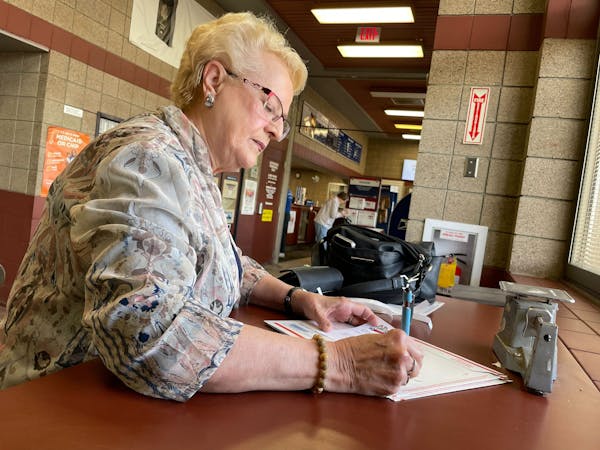As the governor and legislators negotiated a cap on property taxes last session, most of the focus was dedicated to a number -- 3.9 percent.
Cities have set their preliminary tax levies for 2009. But there are few 3.9 percent increases to be found.
Instead, Plymouth passed a 6.1 percent increase from 2008, Medina went with 12.4 percent more, Minneapolis approved a 6.9 percent rise, Woodbury voted for 6.8 percent more.
Under the new legislation few cities are actually limited to the 3.9 percent adjustment for inflation. In a way, that's the starting number.
There are then formulas for new construction and additional households. Next, cities can add for special levies, which include police and fire wages and benefits, bonding and foreclosure costs. In the end, there are more than 20 exceptions -- some call them loopholes -- to the limit.
"It makes a city's decisions difficult, because the number that sticks in the public's mind is 3.9 percent," said Medina Mayor Tom Crosby.
Or, as Medina's finance director puts it, "3.9 percent is the number everybody knows," said Jeanne Day. "They don't know about all this other stuff."
Despite the exceptions, the levy limits are putting a real strain on budgets, cities said, especially as energy costs rise and revenue from building permits falls.
"Levy limit means lean times for 2009-2011 city of New Hope budgets," a New Hope newsletter announced, pointing out that public works fuel costs alone are expected to increase by $90,000 in 2009.
With those tensions, some agencies are concerned that cities will begin shifting costs into the "special levies" category -- which in the end could cost taxpayers more.
"Unfortunately, levy limits can create some perverse incentives," said Gary Carlson, intergovernmental relations director for the League of Minnesota Cities, which fought the levy limits last session.
"Without levy limits, you may choose to use your reserves to purchase a firetruck, whereas now," because bonding is considered a special levy outside the limit, "you're almost certain to borrow money to do that," he said.
In its lengthy budget literature, Plymouth staff members asked the City Council whether the city might consider bonding for things like street reconstruction.
"Levy limits over the next few years will make budgeting through the general fund at higher levels much more difficult," the report said. "Staff would like feedback as to the pacing of projects and tolerance for bonding for improvements."
Woodbury's tax base has risen at a rate slower than in past years, and its building permit revenues have dropped. Levy limits have worsened an already tight financial situation, according to council meeting minutes.
The staff will return to the council this month with a budget that includes a reduction of the equivalent of 8.2 full-time employees. But the city is also planning to add staff -- among them, three police officers and an investigation sergeant, paid for with about $320,000 in a special levy.
"While staff is not pleased with the levy limits, they are glad that this provision has been added," the minutes say, "particularly for a city like Woodbury that has had to grow its public safety department to keep up with ... demands."
In part because of the exceptions for special levies -- some of which were added with the legislation -- levy limits are "a blunt instrument" that end up being "quite ineffective," said Phil Krinkie, president of the Taxpayers League of Minnesota.
"Either the limit is too restrictive that it punishes certain communities or cities that are actually being responsible, or there are so many exceptions that it's almost meaningless," he said.
Several cities interviewed said the levy limits did not influence how they set their preliminary levies, which serve as a cap for the final levies they'll approve in the coming months.
Hopkins could have levied up to about 7 percent by law but instead capped its levy at that magic number -- 3.9 percent, said City Manager Rick Getschow. But it did so not because of the Legislature's "artificial limit," he said.
"Frankly, for the last four years, we've stayed within this 3.5 to 4.5 percent range," he said. "We felt that was a target we wanted to shoot for regardless."
Jenna Ross • 612-673-7168

Souhan: South Carolina's Staley brings humor, wisdom to St. Kate's
BCA says deputy stumbled and fell as man with knife charged in Chanhassen, prompting 2 deputies to shoot him

USPS audit found Bemidji post office delayed delivery of 79,000 pieces of mail

